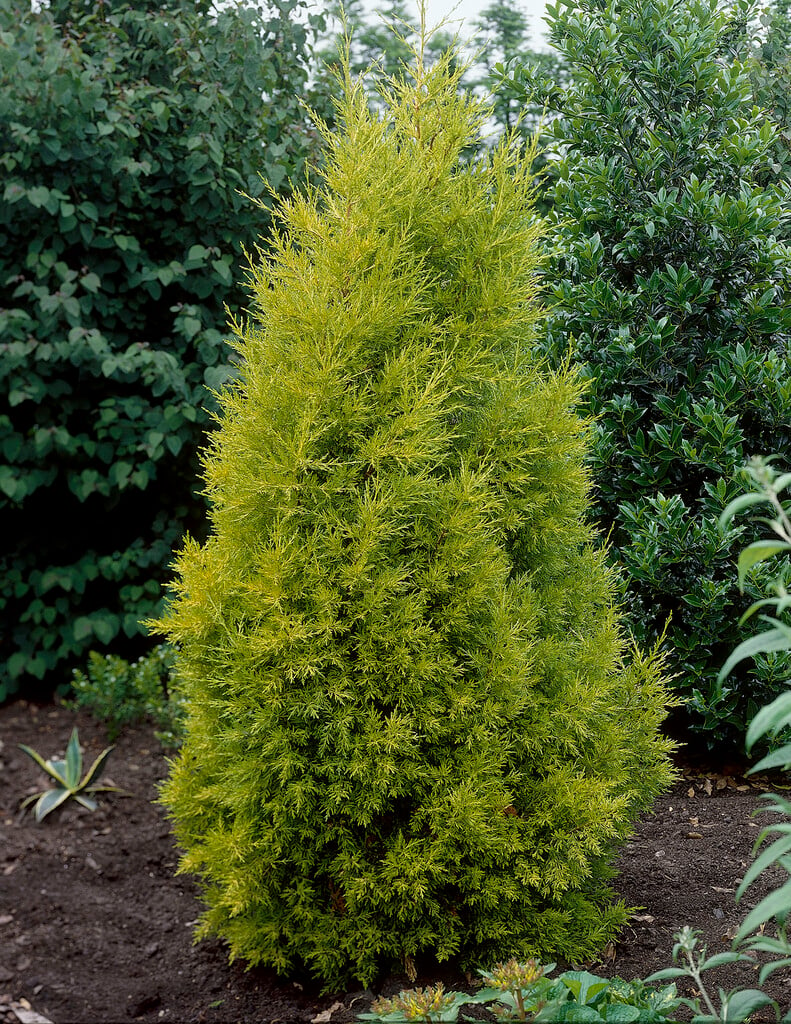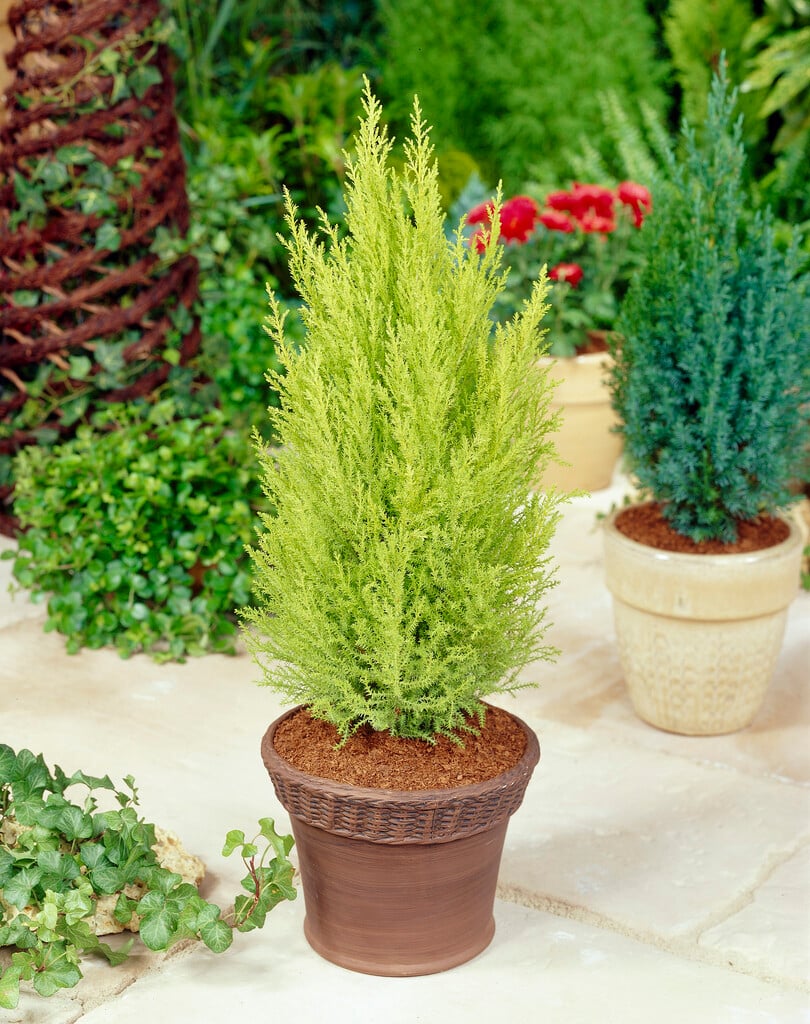Size
Ultimate height
Higher than 12 metresTime to ultimate height
more than 50 yearsUltimate spread
4–8 metresGrowing conditions
Moisture
Well–drainedpH
Acid, Alkaline, NeutralColour & scent
| Stem | Flower | Foliage | Fruit | |
| Spring | Yellow | |||
|---|---|---|---|---|
| Summer | Yellow | |||
| Autumn | Yellow | |||
| Winter | Yellow |
Position
- Full sun
Aspect
North–facing or East–facing or South–facing or West–facing
Exposure
Sheltered Hardiness
H4Botanical details
- Family
- Cupressaceae
- Native to GB / Ireland
- No
- Foliage
- Evergreen
- Habit
- Columnar upright
- Genus
Cupressus are vigorous, evergreen trees with flaking or scaly bark, often with columnar or narrowly ovoid crowns, small, often aromatic, scale-like leaves and small, spherical female cones
- Name status
Accepted
How to grow
Cultivation
Grow in any well-drained soil in full sun with shelter from cold, drying winds. Tolerates dry conditions when established. Can be used for hedging. Height and spread determined by soil, location and prevailing weather. It usually reaches a height of 3-5m in 10 years, to 10m in 20 years and ultimately larger. See conifer cultivation for further advice
Propagation
Propagate by semi-ripe or hardwood cuttings from young vigorous growth in late summer
Suggested planting locations and garden types
- Coastal
- Architectural
- Low Maintenance
- Hedging and screens
Pruning
No pruning required but can be pruned to control height and spread; prune hedges in late spring
Pests
May be susceptible to cypress aphid
Diseases
May be susceptible to various diseases including honey fungus, see Conifers: brown patches
Love gardening
Sign up to receive regular gardening tips, inspiration, offers and more
View our Privacy Policy
Get involved
The Royal Horticultural Society is the UK’s leading gardening charity. We aim to enrich everyone’s life through plants, and make the UK a greener and more beautiful place.

